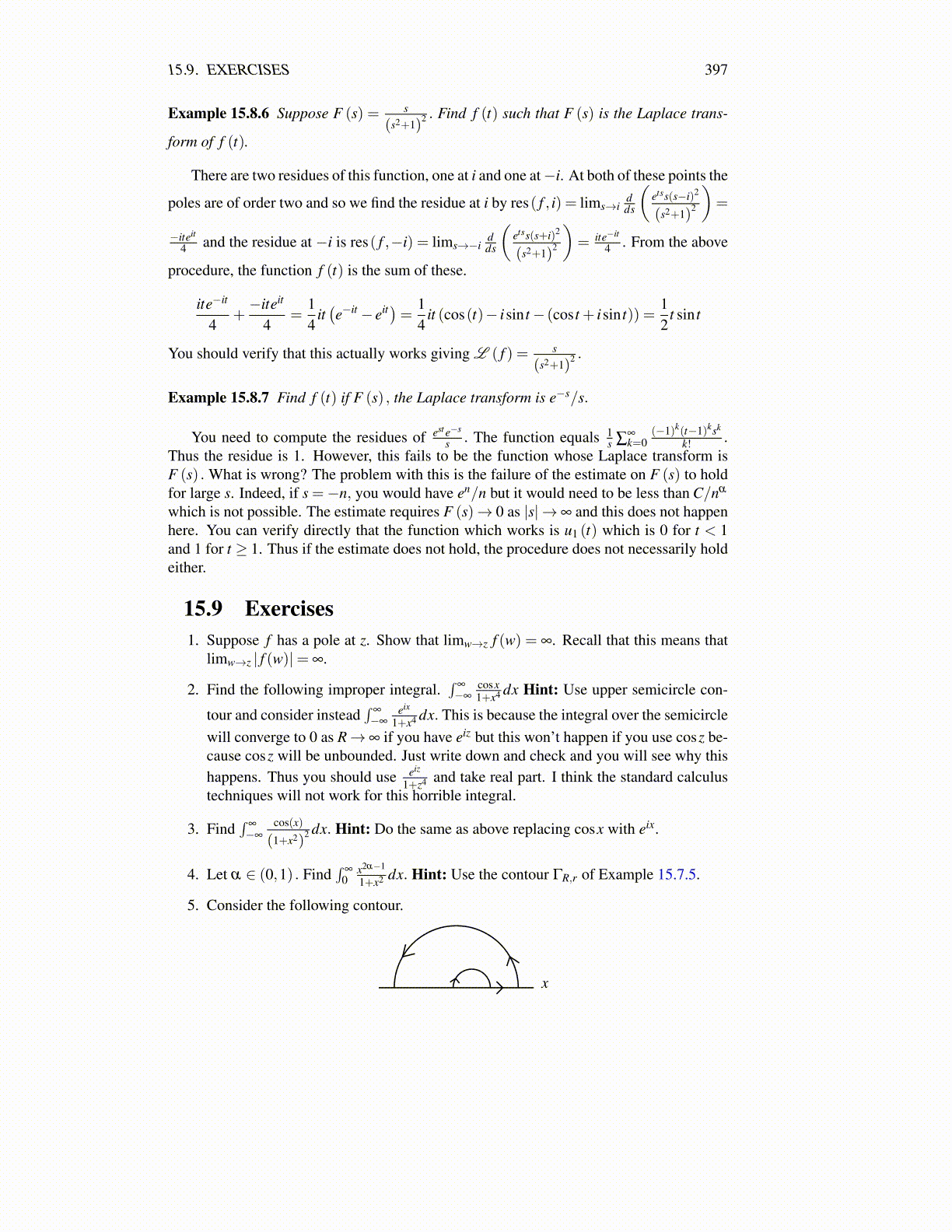
15.9. EXERCISES 397
Example 15.8.6 Suppose F (s) = s
(s2+1)2 . Find f (t) such that F (s) is the Laplace trans-
form of f (t).
There are two residues of this function, one at i and one at−i. At both of these points the
poles are of order two and so we find the residue at i by res( f , i) = lims→idds
(etss(s−i)2
(s2+1)2
)=
−iteit
4 and the residue at −i is res( f ,−i) = lims→−idds
(etss(s+i)2
(s2+1)2
)= ite−it
4 . From the above
procedure, the function f (t) is the sum of these.
ite−it
4+−iteit
4=
14
it(e−it − eit)= 1
4it (cos(t)− isin t− (cos t + isin t)) =
12
t sin t
You should verify that this actually works giving L ( f ) = s
(s2+1)2 .
Example 15.8.7 Find f (t) if F (s) , the Laplace transform is e−s/s.
You need to compute the residues of est e−s
s . The function equals 1s ∑
∞k=0
(−1)k(t−1)ksk
k! .Thus the residue is 1. However, this fails to be the function whose Laplace transform isF (s) . What is wrong? The problem with this is the failure of the estimate on F (s) to holdfor large s. Indeed, if s =−n, you would have en/n but it would need to be less than C/nα
which is not possible. The estimate requires F (s)→ 0 as |s| →∞ and this does not happenhere. You can verify directly that the function which works is u1 (t) which is 0 for t < 1and 1 for t ≥ 1. Thus if the estimate does not hold, the procedure does not necessarily holdeither.
15.9 Exercises1. Suppose f has a pole at z. Show that limw→z f (w) = ∞. Recall that this means that
limw→z | f (w)|= ∞.
2. Find the following improper integral.∫
∞
−∞
cosx1+x4 dx Hint: Use upper semicircle con-
tour and consider instead∫
∞
−∞
eix
1+x4 dx. This is because the integral over the semicirclewill converge to 0 as R→∞ if you have eiz but this won’t happen if you use cosz be-cause cosz will be unbounded. Just write down and check and you will see why thishappens. Thus you should use eiz
1+z4 and take real part. I think the standard calculustechniques will not work for this horrible integral.
3. Find∫
∞
−∞
cos(x)
(1+x2)2 dx. Hint: Do the same as above replacing cosx with eix.
4. Let α ∈ (0,1) . Find∫
∞
0x2α−1
1+x2 dx. Hint: Use the contour ΓR,r of Example 15.7.5.
5. Consider the following contour.
x